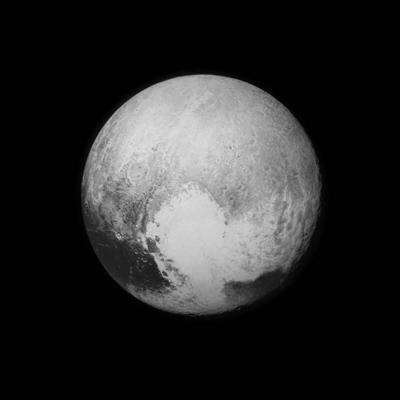For something that is 4.5 billion years old, not much was known about it until one week ago. “It” being Pluto, the dwarf planet at the far reaches of our solar system. Since its discovery in 1930, Pluto has existed as a tiny, obscure ball of ice.
That all changed last Tuesday when NASA spacecraft New Horizons completed its Pluto flyby.
St. Michael’s College Professor John O’Meara, 41, is one of many astronomers and physicists who have been intently following New Horizon’s mission since its inception nine years ago.
“We basically knew very little about Pluto, aside from how far away it was and that it had a few moons, and a bit about its composition,” O’Meara said. “It was very much a blank slate, unlike the other planets in the pioneer Voyager missions. It was the only classical solar system object we had never flown past.”
O’Meara — who received a bachelor’s degree in physics from the University of Washington in 1997 and a Ph.D. in physics from the University of California, San Diego in 2004 — researches galaxy formation and gas recycling.
“I look at how galaxies like our Milky Way take the gas in their surroundings and form it into stars, and how the stars return that material into that environment,” he said.
While his research does not focus on the planetary system specifically, O’Meara is thrilled for the Pluto mission. He describes himself as an “insane fiend for the big missions that NASA is involved in.”
New Horizons launched in 2006, the same year Pluto lost its full planetary status. It took the NASA ship nine years to travel the 3 billion miles from Earth to Pluto. New Horizons did not orbit or land, but simply passed by at a distance of about 7,800 miles.
“It would be like getting data on Kansas via a flight from New York to Los Angeles and just looking from above,” O’Meara said.
The complete New Horizons data will not return to Earth until the end of 2016. O’Meara said it is difficult to send large quantities of data that distance because some is lost in transmission, so the data recovery takes time.
Additionally, O’Meara says, “they’ve only got a tiny antenna on that ship, and then a ‘deep space network’ here on Earth that is used for all missions, so there are only certain times we can look at New Horizons data.”
The mission was designed to determine basic information about Pluto and its five moons, such as topography, atmospheric conditions and elemental composition. Early photographs indicate Pluto has tall ice mountains, some 11,000 feet high; they’d fit right in among the Rocky Mountains.
O’Meara says he was excited and had an “immediate, visceral reaction” when he finally saw what Pluto’s surface looked like, “because we just had no idea.”
One more surprising feature is that Pluto has no craters, indicating its surface is only about 100 million years old — fairly young by solar system standards. Pluto itself is about 4.5 billion years old, like the rest of the solar system, but its surface may be much younger because of unknown tectonic features.
Next, New Horizons will continue its mission with further exploration of the Kuiper Belt — a ring of debris extending beyond the solar system, to which Pluto belongs.
While New Horizons will reveal valuable data for astronomy, physics and other scientific fields, O’Meara believes there is a larger purpose for these projects.
“It fundamentally appeals to the one thing that separates us from all the other animals on the planet, which is that we are curious and we explore, ever since we came down from trees,” he says. Space exploration grabs people and “encourages a general curiosity in science.”
NASA’s budget for fiscal year 2014 was about $17.7 billion, one-half of 1 percent of the total federal budget. That, O’Meara says, “is a small price to pay to ignite interest in the scientific world.”


(0) comments
Welcome to the discussion.
Log In
Keep it clean. Please avoid obscene, vulgar, lewd, racist or sexual language.
PLEASE TURN OFF YOUR CAPS LOCK.
Don't threaten. Threats of harming another person will not be tolerated.
Be truthful. Don't knowingly lie about anyone or anything.
Be nice. No racism, sexism or any sort of -ism that is degrading to another person.
Be proactive. Use the "Report" link on each comment to let us know of abusive posts.
Share with us. We'd love to hear eyewitness accounts, the history behind an article.